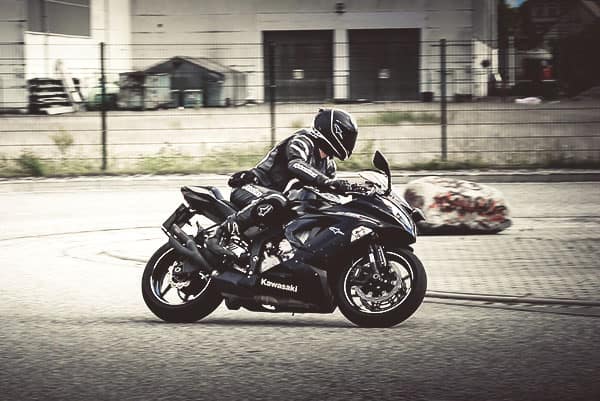Downshifting while Braking: Advance Riding Techniques

Mastering the art of motorcycle downshift while braking is crucial for every rider. This skill requires simultaneous application of the brakes and the clutch to decelerate the bike smoothly while retaining control. It is vital for preserving balance, particularly when making abrupt stops or maneuvering sharp turns at elevated velocities. Downshifting as you brake helps to sustain the ideal engine speed during deceleration, guaranteeing the availability of adequate power for acceleration when required. Grasping the workings of downshifting a motorcycle during braking adds to the overall security of your journey. By effectively synchronizing the utilization of your brakes and gears, the chances of sliding or losing control of your motorcycle are reduced.
Understanding Motorcycle Braking Techniques
Before diving into the specifics downshifting a motorcycle during braking, it’s crucial to comprehend the various braking methods at your disposal as a rider. There are primarily two categories of braking on a motorcycle: controlled braking and emergency braking.
- Controlled Braking - is the most common form of braking on a motorcycle. It involves gradually applying pressure to both the front and rear brakes to slow down the bike smoothly. This technique is ideal for regular riding situations, such as approaching a stop sign or slowing down to navigate tight turns.
- Emergency Braking - on the other hand, is a more aggressive form of braking used in situations where you need to stop your bike quickly to avoid a collision or other dangerous circumstances. This technique involves applying maximum pressure to both the front and rear brakes which might causes skids, often accompanied by downshifting to slow the bike down as quickly as possible.
Importance of Mastering Downshift while Braking

There are several reasons why mastering motorcycle downshifting while braking is vital for all riders. First and foremost, it ensures your safety on the road. Proper downshifting and braking techniques allow you to maintain control of your bike, reducing the risk of accidents or loss of control. Additionally, efficient downshifting and braking can help you save fuel and reduce wear and tear on your bike, prolonging its lifespan.
Furthermore, mastering downshifting while braking can enhance your overall riding experience. Smooth, controlled braking allows you to tackle challenging roads and tight turns with ease, giving you more confidence in your riding abilities. As you become more skilled in downshifting and braking, you’ll also be able to better anticipate obstacles and react faster.
Motorcycle Rider Training on NHTSA is a great place to sharpen on your rider knowledge.
How to Use the Controlled Braking Technique
Now that you understand the importance of motorcycle downshifting while braking, let’s dive into the details of how to use the controlled braking technique on your bike. This technique involves applying gradual pressure on both the front and rear brakes to slow down your motorcycle smoothly. Here’s how to do it:
- As you approach a stopping point or need to slow down, begin by applying light pressure to the front brake lever with your right hand. The front brake is responsible for the majority of your bike’s stopping power, so it’s essential to start here.
- Simultaneously, apply light pressure to the rear brake pedal with your right foot. The rear brake helps to stabilize your bike, so using it in conjunction with the front brake will ensure a smooth, controlled stop.
- Gradually increase the pressure on both the front and rear brakes as needed, ensuring that you maintain a steady, even pressure on both brakes. Avoid sudden or sharp movements, as this can cause your bike to become unstable.
Step-by-Step Guide to Motorcycle Downshifting

Now that you have a basic understanding of the controlled braking technique, it’s time to incorporate downshifting into the process. Follow these steps to master motorcycle downshifting while braking:
- As you begin to apply pressure to the front and rear brakes, simultaneously pull in the clutch lever with your left hand.
- With the clutch lever fully engaged, use your left foot to downshift to a lower gear. The exact number of gears you’ll need to downshift will depend on your current speed and the desired speed you want to reach.
- Slowly release the clutch lever while continuing to apply pressure to both the front and rear brakes. As you do this, gently roll off the throttle with your right hand to maintain a steady deceleration.
- Continue downshifting and braking as needed until you reach your desired speed or come to a complete stop.
- When you’re ready to accelerate again, smoothly release the brakes and apply the throttle while simultaneously upshifting to the appropriate gear.
Common Mistakes and How to Avoid Them
As with any skill, there are common mistakes that riders often make when learning how to downshift while braking. Here are a few of the most common errors and how to avoid them:
- Releasing the clutch too quickly: This can cause your bike to lurch forward or stall, leading to a loss of control. To avoid this, practice slowly releasing the clutch lever while downshifting to ensure a smooth transition between gears.
- Not downshifting enough: Failing to downshift to the appropriate gear can result in a lack of power when you need to accelerate again. To avoid this, practice downshifting to the correct gear for your current speed and desired speed.
- Not using both brakes: Relying solely on the front or rear brake can result in uneven braking and a loss of control. Always apply pressure to both the front and rear brakes when slowing down or stopping.
Motorcycle Downshifting and Braking in Different Scenarios

Urgent Stop: In the event of an urgent stop (such as when a car suddenly enters your trajectory, requiring full braking power to prevent a crash), utilize both the front and rear brakes, applying swift yet progressive pressure (this permits weight distribution to the front tire, enhancing its traction) while also engaging the clutch. Keeping the clutch connected will extend your braking range.
Approaching a red light or stop sign: When closing in on a junction with a stop sign or traffic signal (with adequate time and space to halt without urgency): Release the accelerator, let the engine offer braking assistance, shift gears down, and continue this process while approaching. Utilize both brakes to reach a complete stop at the intended spot.
Navigating tight turns: If you need to slow down quickly to navigate a tight turn or bend (with ample time and space to halt without urgency): Ease off the accelerator, let the engine do the braking, downshift, and continue as you get closer until you reach a secure entry speed. If you’ve misjudged the speed needed for the sharpness of the turn or curve, you must use the brakes PRIOR to entering the turn or curve.
Descending steep hills: When riding downhill, use downshifting and braking to help maintain a controlled speed and reduce the strain on your brakes.
Personal Opinion - How to Downshift in a Straight Line

Initially, I ease off the accelerator and immediately start to use the rear brake in conjunction with the front brake. While the motorcycle decelerates, I shift to lower gears using the clutch. I choose the next lower gear to correspond with the bike’s speed. This ensures that I am always in the appropriate gear should I need to maneuver before stopping.
Once the “deceleration phase” is complete, I begin to apply the front brake. As long as you’re moving in a straight line and not tilting, you can increase front brake pressure while maintaining rear braking. At this point, you should be in first or second gear, and have finally stopped. It is essential to shift gears when decelerating. Although engine braking isn’t necessary, gear changing is crucial. Shifting several gears while stationary can harm the transmission, and being in the appropriate gear is safer for multiple reasons, such as needing to quickly move if the vehicle behind you fails to stop. Additionally, avoid putting the motorcycle in neutral at the red light; always be prepared to take off.
Advanced Techniques for Experienced Riders
As you become more experienced and comfortable with motorcycle downshifting while braking, you may want to explore some advanced techniques to further enhance your riding skills. These might include trail braking, which involves maintaining light pressure on the brakes while entering a corner, and rev-matching, a technique that helps to match your engine speed with your road speed during downshifting. Remember, the key to mastering motorcycle downshifting while braking is practice and patience.
Join Our Riding Community
Get exclusive gear reviews, riding tips, and early access to deals delivered to your inbox.
No spam. Unsubscribe anytime. We respect your privacy.